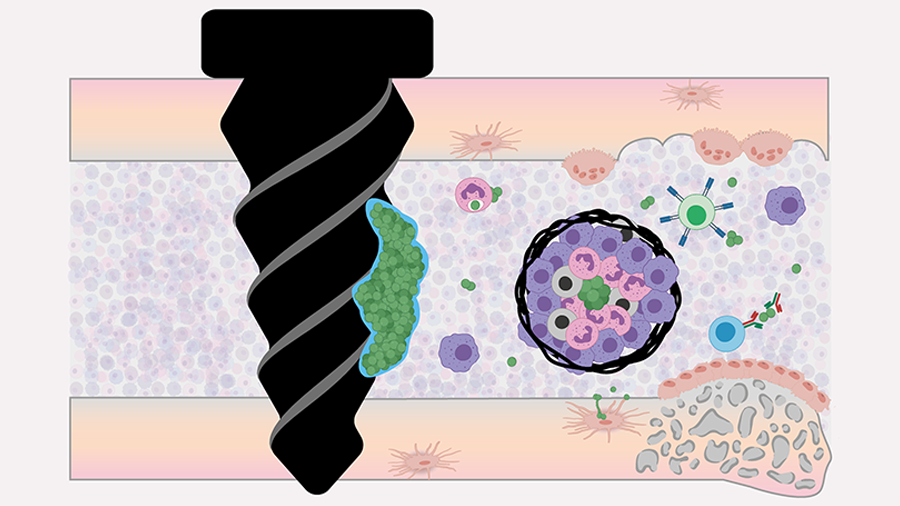Update on ARI’s research into the pathology of osteomyelitis
New review highlights recent discoveries in osteomyelitis pathology and innovative study methods

Osteomyelitis, an inflammation of the bone and bone marrow, is most commonly caused by a Staphylococcus aureus infection. Understanding of the underlying pathophysiology of osteomyelitis, from the perspective of both host and pathogen, has been revised in recent years.
A review , titled, “Current Concepts of Osteomyelitis: From Pathologic Mechanisms to Advanced Research Methods" has been published in the June 2020 edition of The American Journal of Pathology by researchers from the AO Research Institute Davos (ARI) in collaboration with the Amsterdam University Medical Centers (UMC), the Netherlands; the University of Rochester, United States; the University of Adelaide, Australia; and Universitätspital Basel, Switzerland. The review provides an overview of the main pathological concepts in osteomyelitis, with a focus on the discoveries made in recent years. Notable discoveries mentioned in the review include the role played by osteocytes in the recruitment of immune cells, the invasion and persistence of S. aureus in submicron channels of cortical bone, and the diagnostic role of polymorphonuclear cells in implant-associated osteomyelitis.
This review outlines the value of modern in vitro cell culture techniques, with a focus on their current application to infectious diseases and osteomyelitis in particular. Multicellular, 3D in vitro models of osteomyelitis provide an exciting option for studying the pathology of osteomyelitis using human cells, promising advancement of understanding of this disease, while also reducing animal use.
To direct research efforts into the development of even more osteomyelitis-related advanced in vitro models, the review ends with an outlook for 3D osteomyelitis in vitro model development. Within ARI, the development of advanced in vitro cell cultures for osteomyelitis pathogenesis is ongoing. This work includes the development of a 3D in vitro abscess model and an in vitro model of S. aureus colonizing the submicron channels of cortical bone, both AO Trauma-funded projects.

